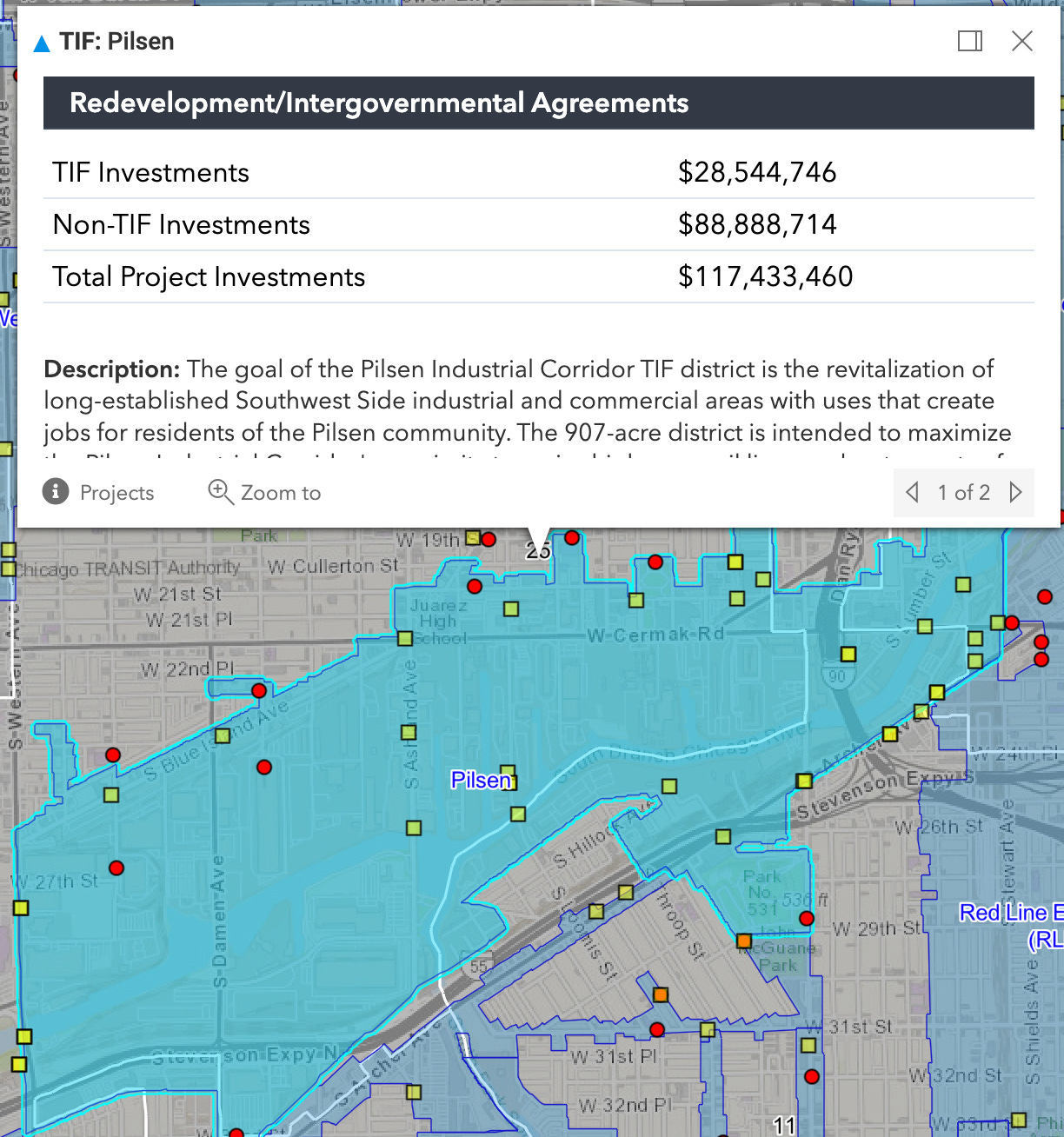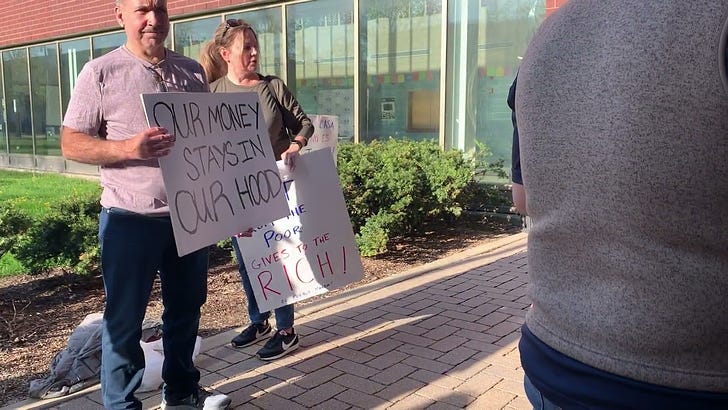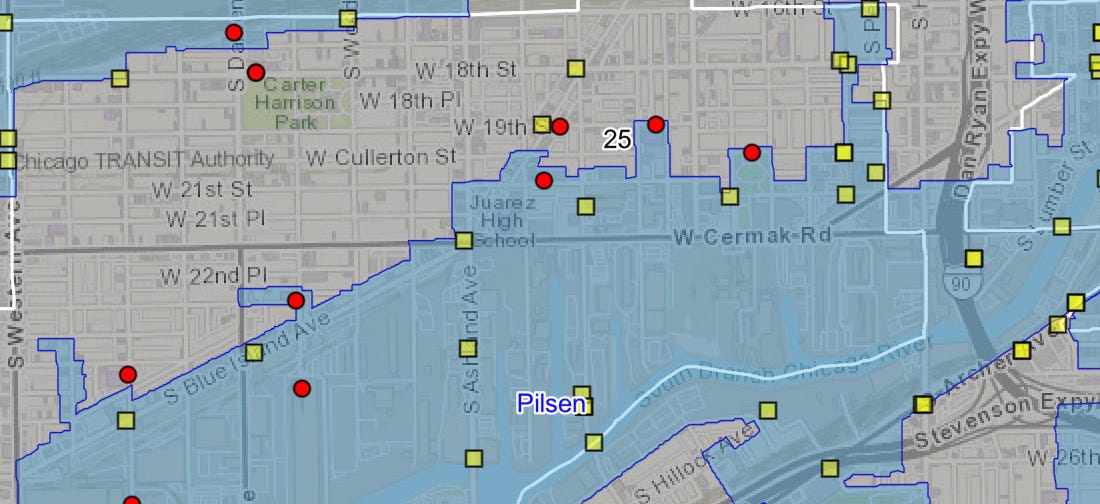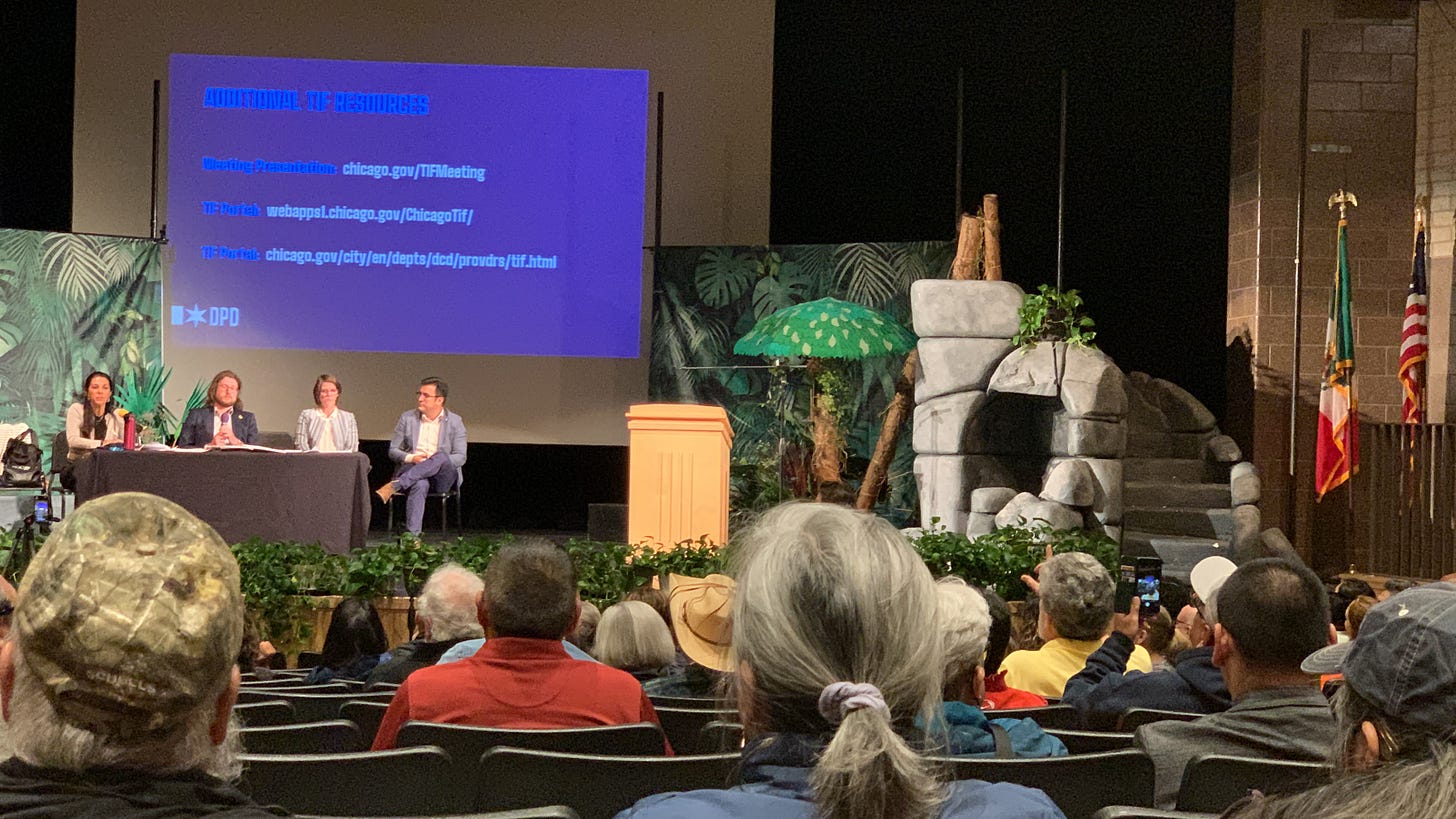The Pilsen TIF meeting that shook the city
Resistance and Redevelopment in the heart of Chicago
A few weeks ago, as residents of the Pilsen neighborhood in Chicago, we received notice that there would be a community meeting to discuss an amendment to the Pilsen TIF District. Because my husband and I had missed communication for a meeting about an apartment conversion next door to us in the past, I was not going to miss this one, even though I had no idea what a TIF was, or why it mattered.
I went to this meeting last night, and as a 20-year resident of Pilsen and ally of the Hispanic community in Chicago, I feel like it’s important for me to document what’s going on. There doesn’t appear to be any news reporting on what was an extremely contentious and passionate meeting where the city heard directly from people who feel put upon, overworked, and their homes, livelihoods, and communities threatened.
Here is the line outside the school auditorium where the meeting took place, to give you a feeling of the gathering. It continued unabated inside.
Now, before the meeting, I showed my Dad the notice about the TIF meeting and asked him what it was all about. Because, as a former Country Director of Planning and Zoning, he’s an expert. What I learned from him was not very reassuring. In short, a TIF, or a Tax Increment Financing scheme, is where the city allocates property taxes from the properties within a TIF district, and those moneys are to fund — or offset costs for — public and private development in that area. In many cases, however, it goes to private developers. “Nothing will be the same again,” said my Dad.
The City of Chicago’s TIF page says that a TIF is a
special funding tool used by the City of Chicago to promote public and private investment across the city. Funds are used to build and repair roads and infrastructure, clean polluted land and put vacant properties back to productive use, usually in conjunction with private development projects. Funds are generated by growth in the Equalized Assessed Valuation (EAV) of properties within a designated district over a period of 23 years. (my emphasis)
It is known that Pilsen has long had to advocate for itself. What would you expect from the community that is home to Haymarket? When UIC was built in the 1960s, the fight over the use of the area went to the U.S. Supreme Court, which declined to hear the case, and Mayor Daley’s UIC campus development went through, displacing thousands of residents.
Pilsen has always been a home to an immigrant community, first Eastern Europeans, and later people from Central America in the 1950s through to today. It’s the home to the National Museum of Mexican Art, it has a rich mural tradition (including a Banksy, which is now gone), and it’s become a culinary destination, too.
In 2020, some in the city worked to turn an area of Pilsen into an historic district, a fight that many mentioned last night in the meeting. The plan was voted down due to the widespread protests from Pilsen residents. Given the vociferous speeches last night, it’s possible that the new TIF amendment might be heading the same way.
SPECIFICALLY, last night’s TIF community meeting was about expanding the current TIF boundaries and amending the original TIF plan. Amendments are not new to TIF plans, and TIF districts seem to go on into perpetuity once they have been established. The Pilsen TIF district was formed in 1998 and set to expire in 2022. The boundaries were originally limited to the “industrial corridor” of Pilsen, a bleak area of warehouses and industrial sites. The new Pilsen boundary amendment, however, would absorb basically the entire neighborhood of Pilsen, with a key focus on 18th street businesses and residential neighborhoods.
Here are two images from the City’s TIF website: The first is the original boundaries for reference, and below that is a close up of the new addition. Basically, all of Pilsen is included after the boundary amendment.

Below is shown the area covered by the pop-up above: the grey area would be added to the light blue area, so nearly all of Pilsen would be within the new TIF boundaries.
This proposed TIF boundary amendment comes on the heels of a massive property tax hike on the community. While most of Chicago saw an 8% increase in property taxes last year, taxes in the Pilsen neighborhood went up by a whopping 46%.
And the people are tired.
With the massive increase in taxes combined with higher costs of living, for an already marginalized community, it’s hard for them not to see this as a coordinated effort push them out.
“We just want to be left in peace,” said one man last night, in near despair. “I had a very bad Christmas this year.”
THE MEETING last night was so contentious, with interruption after interruption, that the speakers ended up halting the presentation and moving straight to the “public comment” portion. The representatives from the city, including the main speaker, Ann Moroney, president of the private consulting firm, Johnson Research Group, appeared defeated and exasperated after having to yield the floor again and again to very upset residents. (Also, it feels like having a private contractor speak at a public community meeting filled with residents worried about private developers might not have been the best tone-setter, although this is probably standard practice by now.)
I recorded nearly the entire meeting, and might post more, but here is a summary of the the main points I heard from the community:
“The TIF moneys go into a slush fund and they are used in other places, not Pilsen.” And while the city officials state the funds go back to the community they are raised from, last year Mayor Lightfoot used surplus TIF funds to cover city budget shortfalls.
“Private Developers get the money. It doesn’t go to small business owners or directly benefit the residents of Pilsen.” Well, this is right there in the TIF definition given by the city: “in conjunction with private development projects.” Anecdotally, a well-dressed middle-aged white man giving Back to the Future: 2 Biff Tannen vibes was at the meeting last night, yelling at the audience to “let the presenters speak!” when the crowd began getting loud. This man was shouted down, and he eventually stormed out of the auditorium where he appeared to flick off someone seated at the presentation table as he was leaving.
“Use the money to help people with property taxes.” Tim Jeffries, the Chicago Planning Department Managing Deputy Commissioner, told the audience that as of right now, the law is not set up to use those funds to directly offset property taxes for individuals.
“Don’t underestimate us. We are not stupid.” This was heard from multiple fronts. Specifically, people called out the cherry-picked and watered-down data used in the powerpoint presentation. There were requests to put the presentation up online. While we were told it would be available and given several websites where it would be found, as of now, no presentations (from any meeting) are available. A woman educator in the audience who introduced herself as “Dr.” said she was a planning instructor. She was particularly harsh about the selective data used in the presentation, saying their use of “superficial examples make me want to give you an ‘F’.” She also asked to see their data sets.
“We have fought for everything we have.” Again, this was mentioned multiple times, including a reference to shooting down the push to make Pilsen an Historic District. While the presentation had multiple examples of TIF-funded projects — including park upgrades, an affordable housing project, and other developments — one comment turned it around, saying that they had to fight for all of those projects and they weren’t just handed to Pilsen. In reply, the private consultant kept going back to a picture of a new playground, as if trying to use it as proof that TIF projects are good for the community. But the audience jeered at her, radiating a feeling of “yes, yes, let us eat cake, lady.” In one last example that underscored how out of step the presenters were, we were shown a picture of a park on a river that had been rehabilitated. It was unfamiliar to me, and as it turned out, I didn’t miss anything. Scathingly, one woman said, “While the river park project is wonderful, it’s not in Pilsen.” Laughter and jeers followed.
OUR 25TH WARD ALDERMAN, Byron Sigcho-Lopez, gave a very impassioned speech at the top of the meeting, vowing to listen to the community and work with the feedback. We were given a questionnaire that asked us if we residents and business owners, and whether we were for or against the amendment. I have been impressed with our Alderman, personally working with him on a concern with the property we are in, and I found him fair and helpful. During the meeting he sat expressionless, even when people from the audience asked him directly “where do you stand?” But I could tell he has a fierce determination to do the right thing, and I hope he listens to the people’s concerns.






